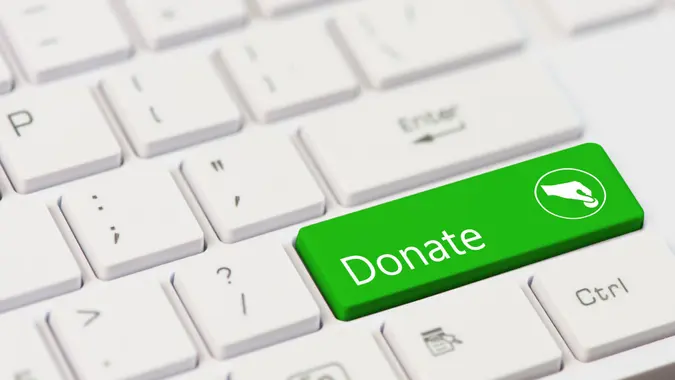4 Steps To Take If You Can’t Afford a $400 Emergency

Commitment to Our Readers
GOBankingRates' editorial team is committed to bringing you unbiased reviews and information. We use data-driven methodologies to evaluate financial products and services - our reviews and ratings are not influenced by advertisers. You can read more about our editorial guidelines and our products and services review methodology.

20 Years
Helping You Live Richer

Reviewed
by Experts

Trusted by
Millions of Readers
Imagine this: Your car breaks down, and the repair bill is a shocking $400. If your reaction is one of panic, you’re not alone. A recent Federal Reserve study found that 37% of U.S. adults would struggle to cover such an unplanned expense without resorting to borrowing or selling something.
Here are four best steps to take if you would struggle with unexpected expenses and want to build your emergency fund.
Create a Gap Between Your Income and Expenses
In order to set aside funds for a rainy day, you need to have something leftover to save. This means finding ways to spend less than you earn so your total expenses don’t equal or match your income.
Start by evaluating your current financial status. List all your sources of income and track your monthly expenses. Identify areas where you can cut back, such as dining out, entertainment or subscription services. Even small changes can add up over time but don’t count out big changes such as downgrading to a cheaper car or moving to an area that has more affordable housing so you can save.
Automate Your Savings
Saving automatically ensures that you’re consistently setting aside money for emergencies without having to think about it. If you can set aside $100 per month with an automatic transfer to your savings account, you’d have the funds needed to cover a $400 emergency in just a few months.
Most banks offer the option to set up automatic transfers from your checking account to a savings account. Also, consider using savings apps that round up your purchases and save the spare change.
Resist Extra Unplanned Spending
When you’re trying to build a financial cushion, it’s crucial to resist the temptation to spend extra money on unplanned purchases. Recognize the situations or emotions that lead to impulse spending. Whether it’s stress, boredom, or social pressure, understanding your triggers can help you develop strategies to avoid unnecessary purchases.
Before making any unplanned purchase, ask yourself if it’s a need or a want. Give yourself 24 to 48 hours to reflect on whether the purchase aligns with your financial goals.
Explore Additional Income Streams
Exploring additional income streams can provide extra funds for savings and emergencies. Consider taking on a part-time job or joining the gig economy. Opportunities like freelancing, ride-sharing, or delivering food can provide flexible ways to earn extra money. Assess your skills and interests to find a side hustle that fits your lifestyle.
 Written by
Written by  Edited by
Edited by 

























